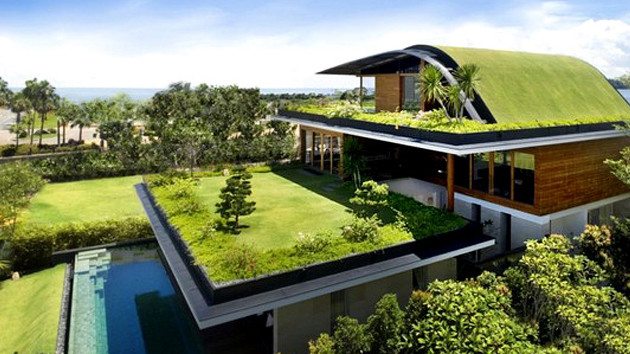With various climate change conferences and resolutions, the world is now focusing on environment-friendly products and green homes.
Climate change and global warming have impacted our lives drastically. From cosmetics industries to technology companies are starting a wide range of eco-friendly initiatives.
And of course, real estate companies are not left out. The Green home ideas nowadays are a buzzword in real estate domains
A green home is definitely not a home having green paints,
large greenery gardens but a Home that is made by using environment-friendly resources and technologies.
The concept of this green home is rapidly growing in middle Asia, especially China and India.
WHAT IS A GREEN HOME? AND WHY IS IT GAINING POPULARITY?
Green homes are constructed using building materials and technologies that have a low impact on the environment.
From construction to renovation, a green home reduces energy consumption by at least 26% to 40% more than traditionally constructed homes.
With growing urbanization, India is facing huge consumption of energy and non-renewable resources (such as sand, bricks) due to the construction of buildings.
According to the Global Status Report published by UNEP, 57% of the global carbon emissions are coming from buildings, whereas in India 26% of India’s total energy consumption.
The non-renewable wastages pollute nature in multiple ways.
Besides, the main concern behind green homes is groundwater depletion in south India. The large use of groundwater during the construction of buildings has pushed the builders and homeowners to seek alternative techniques.
Further, the rising air pollution boosting the sentiments of builders and owners for green homes.
Hence, the concept of green buildings is emerging rapidly as a sustainable way to address environmental concerns in contemporary India.
WHAT ARE THE FEATURES OF GREEN HOMES?
1) Energy Efficient

Energy efficiency is the key feature of green homes. As compared to traditional homes which rely on non-renewable resources to generate energy, a green home uses environment-friendly resources which produce energy in the most efficient way.
A green home designed with rainwater harvesting systems, solar panels, heat pumps, energy-saving LED bulbs, motion sensors.
Moreover, these homes are designed with the latest approaches like L-shaped windows to maximize the use of daylight. So that users can avoid installed in-home lights.
2) Less usage of non-renewable resources

The main concept behind green homes is bringing down the carbon footprints and environment utilization of non-renewable resources.
In the market, you will find hundreds of environment-friendly alternatives such as non-toxic paints, solar empowered equipment, using recycled insulation materials, maximum utilization of daylights, rainwater harvesting, etc.
Though these things demand large installation costs. But if you think for the long term they will reduce energy costs and maintenance costs.
3) Incorporation of Smart technology

Green homes have employed the latest technologies amazingly. It not only reduces the burden on the environment but also makes your home self-reliant.
For instance, a smart thermostat which regulates the indoor temperatures automatically, Smart lights that turn off automatically when there is no need for light at that particular place and of course, it works on motion sensors, smart curtains,
and many more, minimize the energy wastages.
4) Excellent Return on Investment

Green homes play a pivotal role when it comes to ROIs as compared to traditional buildings.
Energy and toxic material-efficient structures, durability, low maintenance cost, greater occupancy due to a better indoor environment, technological optimization, etc.
Hence with so many features on the plate, both developers and investors find great ROIs on green buildings.
CHALLENGES INVOLVED IN GREEN HOMES?
Though green homes come with so many alluring features still there are lots of challenges are there.
High initial cost hinders green homes.
The next one is, the materials for green buildings are not easily accessible. And one of the visible challenges that are prevalent in the Indian market is,
the number of builders who are experts in green buildings is very less. And the litigations and disputes between builders and buyers also hurt the sentiments of developers such as the Saya Gold Avenue Dispute.
CONCLUSION
The concept of green buildings is booming globally but still, the number of unaware homebuyers is very large.
However, those who are aware of the benefits of green homes, take their step backward
due to high initial construction and operational costs which are later catalyzed with low availability of technical experts.
Due to these things, the low demand for green homes hinders the development of green building projects.
However, various government schemes, policies, green bonds are working as a boon to sustainable construction projects.
The number of green buildings in India is less than 10%.
Further to claim a green home, there is some system that gives ratings based on some standards to green homes. For instance, Indian Green Building Council (IGBC) Green Homes,
Leadership in Energy and Environment Design (LEED) gives credit to a home based on energy efficiency, water conservation, quality of used materials, indoor environment quality, etc.
Developers can get profits due to higher property valuation due to sustainable eco-friendly buildings on the other hand buyers can save huge amounts of money by saving energy and maintenance costs.

